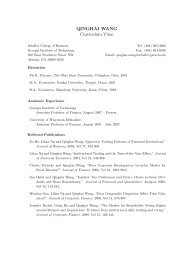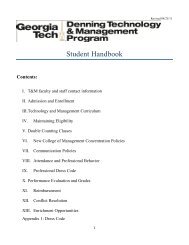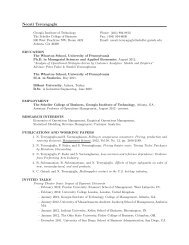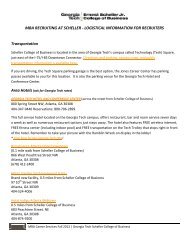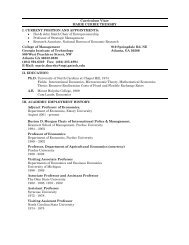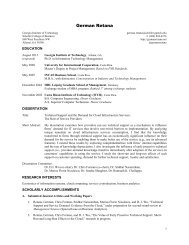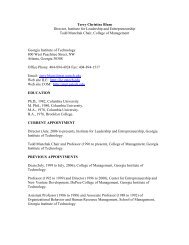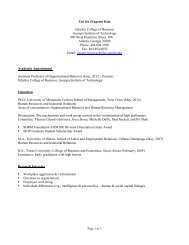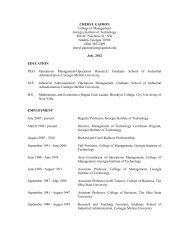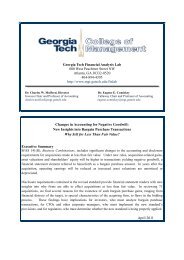Mars-Venus Marriages: Culture and Cross-Border M&A
Mars-Venus Marriages: Culture and Cross-Border M&A
Mars-Venus Marriages: Culture and Cross-Border M&A
Create successful ePaper yourself
Turn your PDF publications into a flip-book with our unique Google optimized e-Paper software.
the host country with both the most acquiring firms as well as the most target firms. In both<br />
categories, UK is a distant second, followed by Canada. Much of the cross-border M&A<br />
activity appears to be restricted to acquirers from developed countries, with South Africa,<br />
Hong Kong, India, China <strong>and</strong> Singapore being the only emerging markets involved in a<br />
substantial way. The US-Canada <strong>and</strong> US-UK combinations are the most common ones. While<br />
we have excluded multiple cross-border acquirers to arrive at our sample, this pattern may<br />
still be indicative of the distribution of overall cross-border M&A activity in the world.<br />
Table 2 presents a summary of the characteristics of deals covered in our dataset. We<br />
note that 97% of cross-border acquisitions in our sample are friendly. Cash purchase of shares<br />
is the likely method of acquisition in over three-quarters of the cases, while a tender offer is<br />
made in only about 11% of cases. Over two-thirds of the acquisitions are unrelated at least at<br />
the 4-digit SIC level.<br />
Apart from the features of the deal, country-level characteristics are likely to<br />
influence the success of a cross-border acquisition. We therefore investigate the effect of<br />
economic <strong>and</strong> cultural differences between the acquirer’s country <strong>and</strong> that of the target on the<br />
performance of the acquirer. We use the relative difference in per capita income (PCI_diff) to<br />
capture the economic disparity between the two countries. In addition, we use the volatility of<br />
the exchange rate changes between the two countries (Forex_Volatility), the target country’s<br />
openness to foreign trade (Openness_target) <strong>and</strong> extent of bilateral trade ( Log (Bilateral<br />
Trade)) as explanatory variables. In order to account for the differences in corporate<br />
governance systems between acquirer <strong>and</strong> target nations, we use data on antidirector indices<br />
obtained from LLSV (1998). Finally we use several alternative measures of “cultural<br />
distance” – the Hofstede distance, Religion, Language <strong>and</strong> Legal Origin – to capture the<br />
cross-country differences in culture.<br />
Economic difference between the two nations may<br />
be expected to have a considerable effect on the performance of the acquisition. Differences<br />
in per capita income are often associated with major socio-economic differences between<br />
10



